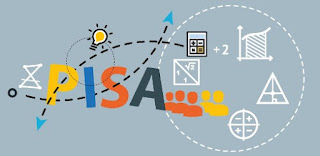What can maths teachers learn from PISA?Posted: 07 Oct 2016 04:57 AM PDT by Andreas Schleicher
Director, OECD Directorate for Education and Skills
When we think back on schools in the 20th century, we imagine rows of students facing the front of the classroom and listening to the teacher lecture. Even though more and more education policies over the past 20 years are encouraging teachers to give students the chance to actively participate in their learning, in 2012, only one in four students across OECD countries reported that their teacher asks them to break out into small groups to work out a problem on their own. Of course, teachers want students to enjoy the learning process but they also want students to focus on the topic at hand, keeping disorder in the classroom to a minimum. OECD’s newest report, Ten Questions for Mathematics Teachers… and how PISA can help answer them, based on PISA 2012 data, delves into diverse teaching and learning methods and what works for different types of classrooms around the world. When it comes to learning mathematics, certain teacher-directed learning strategies, such as asking questions to check whether students understand what has been taught, has proven to work well when solving basic mathematics problems. And research does show that student-oriented strategies, such as allowing students to collaborate and direct their own learning, can have a positive impact on their learning and motivation. But teacher-directed strategies, and in fact all teaching strategies, work best when teachers also challenge students and encourage them to focus more on the process rather than the answer. These types of strategies, known as cognitive-activation strategies, ask students to summarise, question and predict – requiring students to link new information to information they have already learned and apply their skills to a new context where the answer to a problem is not immediately obvious or can even be solved in multiple ways. In fact, PISA data indicate that across OECD countries, students who reported that their teachers use cognitive-activation strategies more frequently in their mathematics classes score higher in mathematics. Depending on the classroom environment, teachers understand that they need to combine different strategies to ensure that students grasp the basic concepts but are also able to advance further when ready, tackling more challenging problems on their own. Ten Questions for Mathematics Teachers explores these topics along with others that are relevant for mathematics teachers today. The report takes findings based on PISA data and organises them into ten questions encompassing teaching and learning strategies, curriculum coverage and various student characteristics, looking at how they relate to student achievement, mathematics instruction and to each other. Ten Questions aims to give teachers timely evidence-based insights that will help them reflect on their teaching strategies and how students learn. Links: Webinar – Friday, October 7, 2016 9:30 am – 10:45 am ET
Ten Questions for Mathematics Teachers… and How PISA Can Help Answer Them Presented by The Alliance for Excellent Education and OECD.
|
Octubrismo y la batalla por su significado
Octubrismo y la batalla por su significado No deja de ser una paradoja que el octubrismo sea exaltado por la atención...

0 Comments